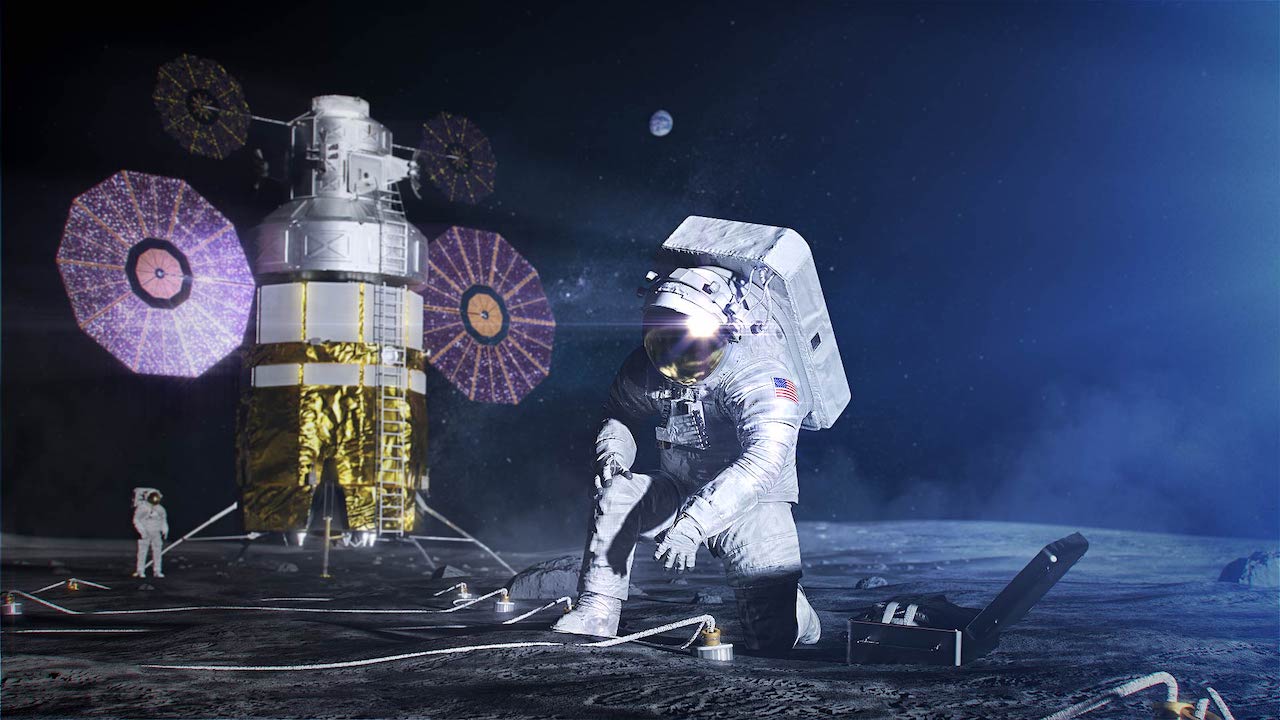NASA picks new experiments for commercial delivery to moon in 2026

Privately developed spacecraft will carry a new suite of science gear to the moon in 2026 to support NASA's Artemis lunar exploration program, if all goes according to plan.
The agency has selected two sets of instruments as a part of its Commercial Lunar Payload Services (CLPS) initiative, which aims to study the moon's history and environment using gear delivered by privately developed landers and rovers. Aside from the science value, such work will help NASA figure out how best to support Artemis astronauts in the harsh lunar environment, agency officials have said.
The new science equipment will be delivered to the surface in 2026, NASA official said in a statement Thursday (June 2). In part, the instruments will examine a weird lunar feature called the Gruithuisen Domes, which formed mysteriously by magma on a world lacking plate tectonics and large amounts of liquid water.
The Lunar Vulkan Imaging and Spectroscopy Explorer (Lunar-VISE) will focus on this "rare form of lunar volcanism," Joel Kearns, deputy associate administrator for exploration in NASA's Science Mission Directorate, said in the statement.
In addition, a biological experiment on a small cubesat-based device will separately study how yeast is affected by the low gravity and high radiation on the moon's surface.
Related: Facts about Earth's moon

Lunar-VISE includes two instruments on a stationary lander and three on a yet-to-be-selected CLPS rover. The mission will target the summit of one of the Gruithuisen Domes to study the lunar regolith (soil) to figure out the feature's formation history. The lead investigator is Kerri Donaldson Hanna, a planetary geologist and assistant professor of physics at the University of Central Florida.
Breaking space news, the latest updates on rocket launches, skywatching events and more!
The biology investigation is called the Lunar Explorer Instrument for space biology Applications (LEIA) science suite. A species of yeast (Saccharomyces cerevisiae), a convenient proxy to understand cell activity and DNA in humans, will be placed on the lunar surface to assess its reaction to the harsh environment. The lead investigator is Andrew Settles, synthetic biology lead at NASA's Ames Research Center in Silicon Valley, California.
Task orders to deliver these two investigations are forthcoming, NASA said. The agency also selected two project scientists to coordinate the science activities and delivery of these investigations: John Karcz of NASA Ames (Lunar-VISE) and Cindy Young of NASA's Langley Research Center in Virginia (LEIA).
The selected experiments are the second set under NASA's Payloads and Research Investigations on the Surface of the Moon (PRISM) program. The first set was announced in December 2021.
Artemis seeks to put humans on the moon no earlier than 2025 as part of a long-range program to perform crewed lunar science. The program's first uncrewed test mission, Artemis 1, may launch as soon as August, provided it overcomes technical glitches that halted a key "wet dress rehearsal" launch test in April.
Follow Elizabeth Howell on Twitter @howellspace. Follow us on Twitter @Spacedotcom and on Facebook.

Elizabeth Howell (she/her), Ph.D., was a staff writer in the spaceflight channel between 2022 and 2024 specializing in Canadian space news. She was contributing writer for Space.com for 10 years from 2012 to 2024. Elizabeth's reporting includes multiple exclusives with the White House, leading world coverage about a lost-and-found space tomato on the International Space Station, witnessing five human spaceflight launches on two continents, flying parabolic, working inside a spacesuit, and participating in a simulated Mars mission. Her latest book, "Why Am I Taller?" (ECW Press, 2022) is co-written with astronaut Dave Williams.
